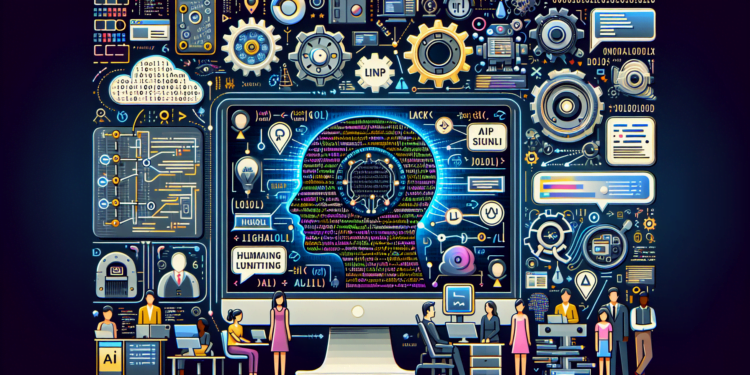Natural Language Processing (NLP) stands as one of the most challenging and dynamic areas of Artificial Intelligence (AI), interlinking computational linguistics, language engineering, and machine learning to facilitate interfaces that enable machines to understand and generate human language. This article will cover everything from underlying theories and classic methodologies to the most recent algorithmic innovations, without overlooking emerging applications and future research projections.
Theoretical Foundations: From Symbolic Models to Distributed Semantics
The early NLP models were based on symbolic approaches, which required explicit rules. The generative grammars of Noam Chomsky, Gödel’s incompleteness theorem, and breakthroughs in formal linguistics led the way in this regard. However, the rigidity of these rules resulted in inflexible systems incapable of handling the ambiguity and variability inherent in natural language.
The advent of distributed semantics, which posits that meaning emerges from the aggregation of word usage contexts, marked a paradigm shift. Algorithms such as Word2Vec or GloVe, and later Transformers based on attention mechanisms, have revolutionized the field by allowing semantic representations to be inferred from large volumes of text.
Recent NLP Model Architectures: The Age of Transformers
The introduction of transformer-based architectures, such as BERT (Bidirectional Encoder Representations from Transformers) and GPT (Generative Pretrained Transformer), has triggered a wave of improvements. These neural networks handle bidirectional context and generate highly contextualized text representations, resulting in unprecedented performance in NLP tasks such as reading comprehension, automatic translation, and text generation.
One of the most significant advances was the attention mechanism. This allows the model to weigh the relative importance of different words in a sentence, capturing long-term dependencies. Consequently, milestones have been reached in various NLP tasks, such as sentiment analysis and question-answering, which were previously inaccessible.
Practical Applications: Case Uses and Deployment of NLP Models
The practical applications of NLP are numerous and increasingly sophisticated. Chatbots and voice assistants now use NLP models to offer more human-like experiences. Personalized medicine, for instance, has benefited from NLP that allows for the extraction and analysis of clinical record information for customized diagnoses and treatments. A particular case is the development of the model BioBERT, a variant of BERT adapted to biomedical texts, which has demonstrated an excellent ability to extract specific information from medical literature.
Current Challenges and Future Directions in NLP
Interpretability and algorithmic bias are two of the most critical current challenges in NLP. The “black box” nature of deep models makes it difficult to understand their internal workings and, therefore, trust in their decisions. Tools like LIME (Local Interpretable Model-agnostic Explanations) or the SHAP technique (SHapley Additive exPlanations) seek to mitigate this problem by providing human-readable explanations for the models’ decisions.
Algorithmic bias in NLP can perpetuate and amplify existing discriminations. Recent approaches to address this include debiasing embeddings and the conscious use of balanced data in training models.
As for future directions, continual learning is emerging as a new paradigm within NLP to develop systems capable of adapting to new tasks or domains with minimal human intervention. This approach could eventually lead to the creation of generalist assistants with a language comprehension and generation capability akin to humans.
In summary, NLP continues to evolve rapidly through theoretical and technical advances that challenge our current boundaries of understanding and engineering. As models become more complex and capable, the need for deep understanding and ethical governance grows proportionately, projecting a field of action and study that will be vital for the future of human-machine interaction.






















